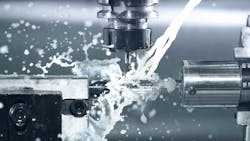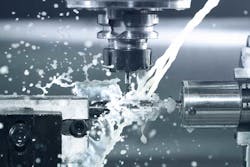The IP protection rating is an important factor to be taken into account when choosing a motor unit, since the chosen protection rating will vary according to the use (outdoor, exposure to dust/water infiltration, etc.). To avoid any risk of a fire outbreak in case of water seepage or damage due to dust, it is advisable to choose an IP65 protection rating, which guarantees complete airtightness and very satisfactory water tightness. This is particularly the case with motor units with integrated electronics.
For more demanding applications where specific protections are required—for example, in a hostile environment or for the food processing industry—the protection rating is crucial to find the right solution for the environment.
The IP protection ratings are defined in International Electrotechnical Commission (IEC) standard 60529. It defines the ways electrical equipment should be resistant to dust or weather. There also are standards for specific industry sectors, such as food processing and pharmaceuticals.
Meeting this standard ensures a product’s protection and resistance against the ingress of solid materials and liquids. This directly concerns the risk of damage to the devices until an incident occurs, such as the outbreak of a fire. In an industrial context, the protection rating therefore guarantees that the equipment can, for example, be left outside without risk of damage or personal safety risks.
IP Issues for Manufacturers
Among the various standards certifying the safety and durability of equipment, the protection rating is an essential standard throughout the manufacturing process. Ensuring that equipment, such as a motor, is certified by an IP standard and that the standard is appropriate for its use is therefore fundamental to the manufacture of its own products.
Similar to protection against the risk of toy fires, IPs require equipment manufacturers to perform laboratory tests to establish the protection level. The purpose is to certify the product with its IP rating or, alternatively, to reject it and thus go back over certain manufacturing phases.
For manufacturers, IP ratings are therefore an essential tool for guaranteeing the quality of their products and the satisfaction of their customers, whether individuals or professionals.
Understanding IP Ratings
Protection ratings are based on two numbered codes that define the exact degree of protection. The first digit is resistance to solids, and the second digit is resistance to liquids. All these protection ratings therefore take the form of “IP” followed by two digits. Generally speaking, the higher the number, the greater the protection against small solids and the better the seal.
The First Digit: Resistance to Solids
The first digit refers to the device’s ability to withstand solid objects:
- 0 = There is no protection against penetration of solid particles, objects or dust.
- 1 = The object or equipment is protected against any solid object larger than 50 mm.
- 2 = The object or equipment is protected against any solid object larger than 12.5 mm.
- 3 = The object or equipment is protected against any solid element larger than 2.5 mm. This would apply, for example, if a user attempted to insert fine tools, cutting objects, etc.
- 4 = The object or equipment is protected against any solid object larger than 1 mm (i.e., other types of tools or even screws).
- 5 = The object is partially protected against dust. While dust can enter crevices of the equipment, it cannot damage the equipment. It also ensures that contact is not possible.
- 6 = The product is dustproof. Dust cannot enter the crevices and therefore cannot damage or soil internal equipment.
The Second Digit: Resistance to Liquids
The IP protection against liquids concerns both the amount of water and the depth of immersion or even the power of a jet.
- 0 = There is no protection against moisture or any liquid that would come into contact with the device or object.
- 1 = The object is protected against liquid falling vertically only.
- 2 = The object is protected against drops falling at 15 deg.
- 3 = The object is protected against liquid sprays in all directions, provided that they do not exceed 60 deg.
- 4 = The object is protected against splashing.
- 5 = This ensures protection against water projections.
- 6 = The object is protected against powerful water jets; for example with a high-pressure cleaning device.
- 7 = The object is waterproof up to a depth of 1 meter.
- 8 = The object is waterproof beyond a depth of 1 meter. Although water may be able to seep into the equipment, it cannot damage the equipment.

